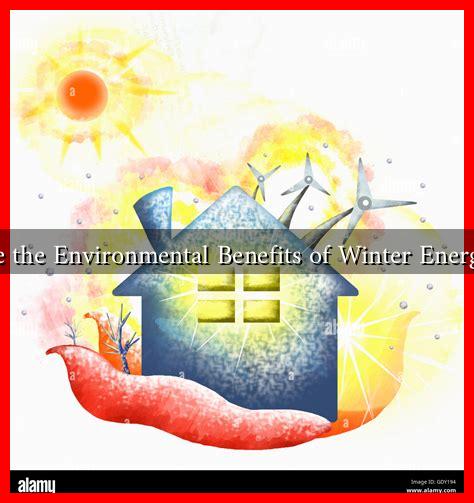-
Table of Contents
What Are the Environmental Benefits of Winter Energy Saving?
As winter approaches, the demand for energy increases significantly due to heating needs. However, this surge in energy consumption can have detrimental effects on the environment. By adopting energy-saving practices during the winter months, individuals and communities can contribute to a more sustainable future. This article explores the environmental benefits of winter energy saving, highlighting its importance and providing actionable insights.
Understanding Energy Consumption in Winter
Winter energy consumption primarily stems from heating systems, which often rely on fossil fuels or electricity generated from non-renewable sources. According to the U.S. Energy Information Administration (EIA), residential heating accounts for about 40% of energy use in homes during winter. This high demand not only leads to increased greenhouse gas emissions but also exacerbates air pollution and contributes to climate change.
Key Environmental Benefits of Winter Energy Saving
Implementing energy-saving measures during winter can yield several environmental benefits:
- Reduction in Greenhouse Gas Emissions: By lowering energy consumption, we can significantly reduce the amount of carbon dioxide and other greenhouse gases released into the atmosphere. For instance, the EPA estimates that residential energy use contributes to nearly 20% of total U.S. greenhouse gas emissions.
- Conservation of Natural Resources: Energy-saving practices help conserve finite resources such as natural gas, coal, and oil. By reducing demand, we can extend the lifespan of these resources and minimize the environmental impact associated with their extraction and processing.
- Improved Air Quality: Lower energy consumption leads to decreased emissions from power plants, which can improve air quality. This is particularly important in urban areas where air pollution can lead to health issues such as asthma and respiratory diseases.
- Encouragement of Renewable Energy Use: Energy-saving measures can create a shift towards renewable energy sources. As demand for energy decreases, it becomes more feasible for communities to invest in solar, wind, and other sustainable energy solutions.
Practical Energy-Saving Strategies for Winter
To maximize the environmental benefits of winter energy saving, individuals can adopt several practical strategies:
- Insulation and Sealing: Properly insulating homes and sealing drafts can significantly reduce heating needs. According to the Department of Energy, homeowners can save up to 20% on heating costs by sealing leaks and adding insulation.
- Energy-Efficient Heating Systems: Upgrading to energy-efficient heating systems, such as heat pumps or high-efficiency furnaces, can drastically reduce energy consumption. The U.S. Department of Energy provides resources for selecting the right system.
- Smart Thermostats: Installing smart thermostats allows homeowners to optimize heating schedules, ensuring that energy is not wasted when spaces are unoccupied.
- Utilizing Natural Heat: Opening curtains during sunny days can help warm homes naturally, reducing the need for artificial heating.
Case Studies: Successful Winter Energy Saving Initiatives
Several communities and organizations have successfully implemented winter energy-saving initiatives, showcasing the potential for broader application:
- Energy Efficiency Programs: The Energy Efficiency and Conservation Block Grant Program has funded numerous projects across the U.S., leading to significant reductions in energy consumption and greenhouse gas emissions.
- Community Solar Projects: In places like Minnesota, community solar projects have allowed residents to access renewable energy, reducing reliance on fossil fuels during the winter months.
Conclusion
Winter energy saving is not just a personal responsibility; it is a collective effort that can lead to substantial environmental benefits. By reducing greenhouse gas emissions, conserving natural resources, and improving air quality, we can make a significant impact on our planet’s health. Implementing practical energy-saving strategies and learning from successful case studies can empower individuals and communities to contribute to a more sustainable future. As we embrace winter, let us also embrace the opportunity to save energy and protect our environment.

